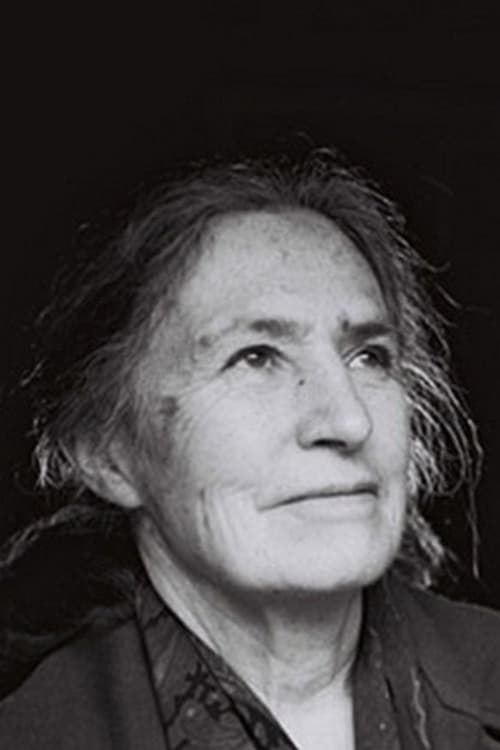
Self (archive footage)
The panorama of human affairs encounters the “man with a movie camera”. His playground has no boundaries, his curiosity no limits. Characters, situations and places pitch camp in the life of a humanity that is at once the viewer and the thing viewed. But what are the last days of this humanity? Have they already passed? Are they now or still to come?

Herself
Short film commissioned by the Cinemathèque Suisse to celebrate Jean-Marie Straub’s 85th birthday. Directed by Jean-Claude Rousseau.

Herself
Short film commissioned by the Cinemathèque Suisse to celebrate Jean-Marie Straub's 85th birthday.

"Jean-Marie Straub and Danièle Huillet" is the overlay of two Cinematons by Gérard Courant with Jean-Marie Straub and Danièle Huillet: "Jean-Marie Straub, Cinématon number 342" and "Danièle Huillet, Cinematon number 343," filmed on May 27, 1984.

La femme
Jean-Marie Straub pushes this musicality of blocks to a paroxysmal extreme, mixing blocks of time (40 years separate the various extracts that are going to be used, and what is to be filmed), blocks of text (Malraux, Fortini, Vittorini, Hölderlin) and blocks of language (French, Italian, German), and from this ruckus emerges the history of the world, yes, History with a capital H, and from the same movement, the political hope of its being overtaken. So this is an adventure film, about the Human adventure, still one that is always, in the end, overtaken by Nature. (Arnaud Dommerc)

Director
Jean-Marie Straub’s new film closes the circle. The years 1954–2013 are displayed as representing a film produced in collaboration with Danièle Huillet. The two had met in Paris in 1954, around the year they came across the text by Georges Bernanos, to whom Straub has now dedicated a half-hour film. A man and a woman engaged in a dialogue, talking about their love, as if talking across an abyss. Then, in the last take, the two of them close together, motionless for a long time

In the summer of 1986, Danièle Huillet and Jean-Marie Straub were working in the park of an old Sicilian mansion and in a clearing at the foot of Mount Etna shooting Der Tod des Empedokles. Assistant cameraman Jean-Paul Toraille toyed around, so to speak, with his first video camera, filming the daily work on the set. Now, 24 years later, he was joined by Jean-Marie Straub in editing the material into a film. Anyone who expected the shooting of Les Avatars de la mort d’Empédocle to be an austere affair, an exercise entirely devoid of humour or a Straubian tour de force is proven wrong: so much lightness, joy, concentration, spells of waiting for the sun to come out – and even proper slapstick in between – is hard to find.

Director
The film is a commemoration of the lost livelihood of the earth, the lost lives of the War and to the work of two of the cinema’s greatest artists.

Herself
Peter Nestler's poetic documentary Verteidigung der Zeit is not only an hommage to Jean-Marie Straub's and Danièle Huillet's film Quei loro incontri (2005), but also to their access to cinema itself. In various encounters and conversations Nestler offers an insight into their life and work, including passages from Italian poet Cesare Pavese.

Director
Inspired by Rossellini's Europa '51 Straub-Huillet made a film consisting of two pans of a street corner in Paris.

Producer
인류에게 필수적인 선(善)과 그 잠재력을 노래하는 한 곡의 찬가이다. 인류 위에 존재하는 신, 그들이 우리에 대한 슬프지만 희망을 간직한 대화를 나눈다. 그들이 나누는 다섯 번의 대화는 경이로움과 곤혹스러움, 슬픔과 즐거움, 자신감과 심지어 용감함으로 가득 차 있다. 평생을 함께 작업해 온 두 영화작가가 선사하는 독특한 웰메이드 대화 교향곡이다.

Editor
인류에게 필수적인 선(善)과 그 잠재력을 노래하는 한 곡의 찬가이다. 인류 위에 존재하는 신, 그들이 우리에 대한 슬프지만 희망을 간직한 대화를 나눈다. 그들이 나누는 다섯 번의 대화는 경이로움과 곤혹스러움, 슬픔과 즐거움, 자신감과 심지어 용감함으로 가득 차 있다. 평생을 함께 작업해 온 두 영화작가가 선사하는 독특한 웰메이드 대화 교향곡이다.

Screenplay
인류에게 필수적인 선(善)과 그 잠재력을 노래하는 한 곡의 찬가이다. 인류 위에 존재하는 신, 그들이 우리에 대한 슬프지만 희망을 간직한 대화를 나눈다. 그들이 나누는 다섯 번의 대화는 경이로움과 곤혹스러움, 슬픔과 즐거움, 자신감과 심지어 용감함으로 가득 차 있다. 평생을 함께 작업해 온 두 영화작가가 선사하는 독특한 웰메이드 대화 교향곡이다.

Director
인류에게 필수적인 선(善)과 그 잠재력을 노래하는 한 곡의 찬가이다. 인류 위에 존재하는 신, 그들이 우리에 대한 슬프지만 희망을 간직한 대화를 나눈다. 그들이 나누는 다섯 번의 대화는 경이로움과 곤혹스러움, 슬픔과 즐거움, 자신감과 심지어 용감함으로 가득 차 있다. 평생을 함께 작업해 온 두 영화작가가 선사하는 독특한 웰메이드 대화 교향곡이다.

A film by Laura Vitali about the last work of the couple Jean-Marie Straub and Danièle Huillet in Buti (Italy) in May 2005, namely the staging of the last five "Dialogues with Leucò" by Cesare Pavese. In this sense, it is a moving testimony. Vitali alternates rehearsal sessions and interviews - by Jean-Marie Straub, Danièle Huillet and actors such as Giovanna Daddi, Angela Nugara and Andrea Bacci - who illuminate from the inside the methods of the two filmmakers and their relation to the work of Cesare Pavese, while situating the very special place that makes this work possible - the small town of Buti which warmly welcomed Straub and Huillet for a decade - and by bringing out the political dimension of their thought.

Director
A visit to the Louvre in Paris commentated by an actor reading Cézanne.

Writer
In Italy, immediately subsequent to the war, a group of people who lost all they possessed during the conflict, settle in a village in ruins. They intend to restore the city from the rubble and re-start life, in imitation of the women of Messina who rebuilt their city, destroyed as it was by an earthquake. Oscillating between respect and suspicion, co-existence between group members is tense. Things become complicated when an envoy from the government arrives to say that nothing there belongs to them. The film is a free adaptation of fragments of the novella ‘The Women of Messina’, by Sicilian writer Elio Vittorini.

Editor
In Italy, immediately subsequent to the war, a group of people who lost all they possessed during the conflict, settle in a village in ruins. They intend to restore the city from the rubble and re-start life, in imitation of the women of Messina who rebuilt their city, destroyed as it was by an earthquake. Oscillating between respect and suspicion, co-existence between group members is tense. Things become complicated when an envoy from the government arrives to say that nothing there belongs to them. The film is a free adaptation of fragments of the novella ‘The Women of Messina’, by Sicilian writer Elio Vittorini.

Director
In Italy, immediately subsequent to the war, a group of people who lost all they possessed during the conflict, settle in a village in ruins. They intend to restore the city from the rubble and re-start life, in imitation of the women of Messina who rebuilt their city, destroyed as it was by an earthquake. Oscillating between respect and suspicion, co-existence between group members is tense. Things become complicated when an envoy from the government arrives to say that nothing there belongs to them. The film is a free adaptation of fragments of the novella ‘The Women of Messina’, by Sicilian writer Elio Vittorini.

Editor

Producer

Writer

Director

Herself
Undaunted by a commission to make a film about his mentors and aesthetic exemplars, the filmmaking team of Jean-Marie Straub and Danièle Huillet, Costa records with great sensitivity and insight the exacting process by which the two re-edit their film Sicilia!, discussing and arguing over each cut and its effect. Incorporating comments about the influence of figures as diverse as Chaplin and Eisenstein, about the ethical and aesthetic implications of film technique and such matters as rhythm, sound mixing, and acting. The film becomes a tour de force, immersing us in the mysteries of cinema as practiced by some of its greatest creators. Costa calls the film both his first comedy and his first love story.

Director
Recently discovered and shown only twice before, Incantati is an alternate ending to Danièle Huillet and Jean-Marie Straub’s 2003 film Umiliati — fragment as mini-manifesto.

Director
"At the end of filming Umiliati, Straub and Huillet gave thanks to the cast and crew in a graceful way: by inviting Dolando Bernardini to sing several stanzas from Torquato Tasso’s 16th-century epic poem Jerusalem Delivered." - MoMA

Director
An alternate look at a part of Sicilia, perhaps left out for its more straightforward didactic quality. Interesting to again see the long gaps. Also note the extra use of close-up (for them) on the old woman.

Producer
A group of men and women have been brought together after World War II, when Italy regained its national and territorial unity. They make up a primitive community which seeks to erase not only the distress created by the war but also the hardships of life, and look to protect themselves from violence, misery and fear. Amid the ruins of this post-war period, these men and women build a new rapport between themselves, between sexes, between generations, between social and geographical origins, between political camps.

Director
A group of men and women have been brought together after World War II, when Italy regained its national and territorial unity. They make up a primitive community which seeks to erase not only the distress created by the war but also the hardships of life, and look to protect themselves from violence, misery and fear. Amid the ruins of this post-war period, these men and women build a new rapport between themselves, between sexes, between generations, between social and geographical origins, between political camps.

Herself
The original television version of 'Where Does Your Hidden Smile Lie?'

Former Straub/Huillet assistant Jean-Charles Fitoussi films them at work during the shooting of 1999's Sicilia!.

Six unused scenes from Where Does Your Hidden Smile Lie? One of the more priceless of the “bagatelles” in this collection features a lounging Jean-Marie Straub who gives a non-stop disquisition on liberty and filmmaking while Danièle Huillet busies herself with laundry, and their dog Melchior frisks in and out of frame. —Cinematheque Ontario

Editor
엘리오 비토리니의 반 파시스트 소설 `시칠리아에서의 대화`를 각색한 작품. 실베스트로는 어머니를 만나기 위해 고향 시칠리아를 방문한다. 집으로 향하던 길목에서 그는 각양각색의 사람들을 만나고, 그들과 일상적인 대화를 나눈다. 어딘가 부자연스럽지만 위트 있는 대화의 연속이 마치 한 편의 연극 혹은 초기 유성영화를 연상케 한다. 모든 것이 절제된 미니멀한 형식 속에서 간결한 이미지만을 전달하며 관객에게 순수한 ‘영화보기’의 체험을 제공하는, 불가사의한 힘의 영화.

Producer
엘리오 비토리니의 반 파시스트 소설 `시칠리아에서의 대화`를 각색한 작품. 실베스트로는 어머니를 만나기 위해 고향 시칠리아를 방문한다. 집으로 향하던 길목에서 그는 각양각색의 사람들을 만나고, 그들과 일상적인 대화를 나눈다. 어딘가 부자연스럽지만 위트 있는 대화의 연속이 마치 한 편의 연극 혹은 초기 유성영화를 연상케 한다. 모든 것이 절제된 미니멀한 형식 속에서 간결한 이미지만을 전달하며 관객에게 순수한 ‘영화보기’의 체험을 제공하는, 불가사의한 힘의 영화.

Adaptation
엘리오 비토리니의 반 파시스트 소설 `시칠리아에서의 대화`를 각색한 작품. 실베스트로는 어머니를 만나기 위해 고향 시칠리아를 방문한다. 집으로 향하던 길목에서 그는 각양각색의 사람들을 만나고, 그들과 일상적인 대화를 나눈다. 어딘가 부자연스럽지만 위트 있는 대화의 연속이 마치 한 편의 연극 혹은 초기 유성영화를 연상케 한다. 모든 것이 절제된 미니멀한 형식 속에서 간결한 이미지만을 전달하며 관객에게 순수한 ‘영화보기’의 체험을 제공하는, 불가사의한 힘의 영화.

Director
엘리오 비토리니의 반 파시스트 소설 `시칠리아에서의 대화`를 각색한 작품. 실베스트로는 어머니를 만나기 위해 고향 시칠리아를 방문한다. 집으로 향하던 길목에서 그는 각양각색의 사람들을 만나고, 그들과 일상적인 대화를 나눈다. 어딘가 부자연스럽지만 위트 있는 대화의 연속이 마치 한 편의 연극 혹은 초기 유성영화를 연상케 한다. 모든 것이 절제된 미니멀한 형식 속에서 간결한 이미지만을 전달하며 관객에게 순수한 ‘영화보기’의 체험을 제공하는, 불가사의한 힘의 영화.
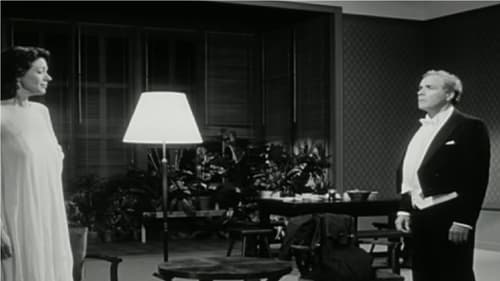
Director
Based on a rarely performed Schoenberg opera from 1929, From Today Until Tomorrow explores one night in a marriage. A husband and wife return from a party where she has flirted with another man while he has cast an appraising eye toward one of her acquaintances. Each dreams, briefly, of leaving the marriage for the excitement and mystery of a new lover.

Editor
About the history of the French region of Lorraine, called Lothringen in German.

Producer
About the history of the French region of Lorraine, called Lothringen in German.

Writer
About the history of the French region of Lorraine, called Lothringen in German.

Director
About the history of the French region of Lorraine, called Lothringen in German.

Production Manager
A fearless Antigone, refusing to allow the dishonored body of her murdered brother Polynices to be devoured by vultures and dogs, defies the Thebian tyrant Creon by burying him.

Producer
A fearless Antigone, refusing to allow the dishonored body of her murdered brother Polynices to be devoured by vultures and dogs, defies the Thebian tyrant Creon by burying him.

Writer
A fearless Antigone, refusing to allow the dishonored body of her murdered brother Polynices to be devoured by vultures and dogs, defies the Thebian tyrant Creon by burying him.

Director
A fearless Antigone, refusing to allow the dishonored body of her murdered brother Polynices to be devoured by vultures and dogs, defies the Thebian tyrant Creon by burying him.

Herself
Documentary about the shooting of Straub's Antigone.

Herself

Paul Cézanne (voice) [uncredited]
A landmark work of symbolistic imagery. The words that the filmmakers speak offscreen are imaginary conversation with Cézanne quoted from a critique by Joachim Gasquet. An exchange of memories spanning over 250 years interweaves everything from the philosophy of Empedocles to excerpts from the film Madame Bovary, to extant paintings by Cézanne, to the buildings of the artists’ village at Mont Sainte-Victoire. —ntticc.or.jp

Director
A landmark work of symbolistic imagery. The words that the filmmakers speak offscreen are imaginary conversation with Cézanne quoted from a critique by Joachim Gasquet. An exchange of memories spanning over 250 years interweaves everything from the philosophy of Empedocles to excerpts from the film Madame Bovary, to extant paintings by Cézanne, to the buildings of the artists’ village at Mont Sainte-Victoire. —ntticc.or.jp

Editor
A companion piece to the earlier film ‘The Death of Empedocles’, 'Black Sin' is an adaptation of the third version of Friedrich Hölderlin’s play ‘Der Tod Des Empedokles’.

Producer
A companion piece to the earlier film ‘The Death of Empedocles’, 'Black Sin' is an adaptation of the third version of Friedrich Hölderlin’s play ‘Der Tod Des Empedokles’.

Adaptation
A companion piece to the earlier film ‘The Death of Empedocles’, 'Black Sin' is an adaptation of the third version of Friedrich Hölderlin’s play ‘Der Tod Des Empedokles’.

Director
A companion piece to the earlier film ‘The Death of Empedocles’, 'Black Sin' is an adaptation of the third version of Friedrich Hölderlin’s play ‘Der Tod Des Empedokles’.

La femme (uncredited)
A companion piece to the earlier film ‘The Death of Empedocles’, 'Black Sin' is an adaptation of the third version of Friedrich Hölderlin’s play ‘Der Tod Des Empedokles’.
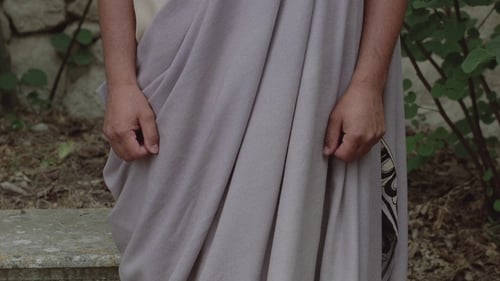
Editor
Film adaptation by Straub and Huillet of Hölderlin's 1798 tragedy on the symbolic death of Empedoclus, the legislator in Ancient Greece.

Adaptation
Film adaptation by Straub and Huillet of Hölderlin's 1798 tragedy on the symbolic death of Empedoclus, the legislator in Ancient Greece.

Director
Film adaptation by Straub and Huillet of Hölderlin's 1798 tragedy on the symbolic death of Empedoclus, the legislator in Ancient Greece.

Editor
"D. W. Griffith’s 1909 short film A Corner in Wheat, a Biblical tale of avarice, divine retribution, and the prolonged suffering of the masses, is the prelude to this political film essay. Straub-Huillet offer a dialectical montage of cause (capitalist greed) and effect (the poverty of the farmer and the urban underclass), and draw from excerpts of their earlier work: Moses und Aaron, Fortini/Cani, and From the Cloud to the Resistance." - MoMA

Director
"D. W. Griffith’s 1909 short film A Corner in Wheat, a Biblical tale of avarice, divine retribution, and the prolonged suffering of the masses, is the prelude to this political film essay. Straub-Huillet offer a dialectical montage of cause (capitalist greed) and effect (the poverty of the farmer and the urban underclass), and draw from excerpts of their earlier work: Moses und Aaron, Fortini/Cani, and From the Cloud to the Resistance." - MoMA

N°343
Reel 35 of Gérard Courant’s on-going Cinematon series.
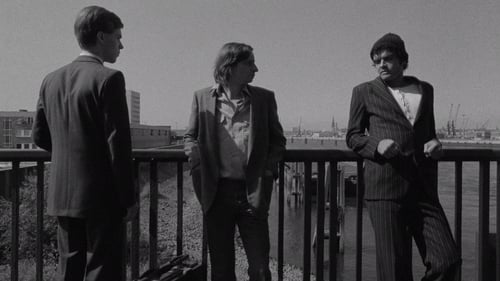
Editor
카프카의 유작 「아메리카」를 각색한 작품으로 독일에 거주하던 장 마리 스트라우브와 다니엘 위예가 함께 전성기를 누리던 시절에 만든 걸작이다. 미국으로 간 독일 청년의 모습을 통해 자본화된 문명의 황폐함을 통찰하는 모더니즘 감독들의 모던한 카프카 해석이 돋보이는 영화. (2013년 제14회 전주국제영화제)

Adaptation
카프카의 유작 「아메리카」를 각색한 작품으로 독일에 거주하던 장 마리 스트라우브와 다니엘 위예가 함께 전성기를 누리던 시절에 만든 걸작이다. 미국으로 간 독일 청년의 모습을 통해 자본화된 문명의 황폐함을 통찰하는 모더니즘 감독들의 모던한 카프카 해석이 돋보이는 영화. (2013년 제14회 전주국제영화제)

Director
카프카의 유작 「아메리카」를 각색한 작품으로 독일에 거주하던 장 마리 스트라우브와 다니엘 위예가 함께 전성기를 누리던 시절에 만든 걸작이다. 미국으로 간 독일 청년의 모습을 통해 자본화된 문명의 황폐함을 통찰하는 모더니즘 감독들의 모던한 카프카 해석이 돋보이는 영화. (2013년 제14회 전주국제영화제)

Herself
Filmmaker Manfred Blank (director of the excellent Pharos of Chaos) interviews Danièle Huillet and Jean-Marie Straub at some length about their then-current production, Klassenverhältnisse (Class Relations), in which he, himself, performed as an actor.

This film is at once a self-portrait and an homage to Jean-Marie Straub, Farocki's role model and former teacher at the Film Academy.

Director
Forgotten Straub-Huillet film that shows outtakes from "Black Sin".
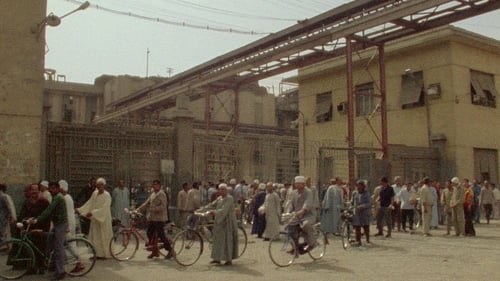
Producer
Inspired by a letter by Friedrich Engels and a 1974 account of two militant Marxist writers who had been imprisoned by the Nasser regime, Straub-Huillet filmed this film in France and Egypt during 1980. They reflect on Egypt’s history of peasant struggle and liberation from Western colonization, and link it to class tensions in France shortly before the Revolution of 1789, quoting texts by Engels as well as the pioneering nonfiction film Workers Leaving the Lumière Factory (1895).

Writer
Inspired by a letter by Friedrich Engels and a 1974 account of two militant Marxist writers who had been imprisoned by the Nasser regime, Straub-Huillet filmed this film in France and Egypt during 1980. They reflect on Egypt’s history of peasant struggle and liberation from Western colonization, and link it to class tensions in France shortly before the Revolution of 1789, quoting texts by Engels as well as the pioneering nonfiction film Workers Leaving the Lumière Factory (1895).

Editor
Inspired by a letter by Friedrich Engels and a 1974 account of two militant Marxist writers who had been imprisoned by the Nasser regime, Straub-Huillet filmed this film in France and Egypt during 1980. They reflect on Egypt’s history of peasant struggle and liberation from Western colonization, and link it to class tensions in France shortly before the Revolution of 1789, quoting texts by Engels as well as the pioneering nonfiction film Workers Leaving the Lumière Factory (1895).

Narrator (segment A) (voice)
Inspired by a letter by Friedrich Engels and a 1974 account of two militant Marxist writers who had been imprisoned by the Nasser regime, Straub-Huillet filmed this film in France and Egypt during 1980. They reflect on Egypt’s history of peasant struggle and liberation from Western colonization, and link it to class tensions in France shortly before the Revolution of 1789, quoting texts by Engels as well as the pioneering nonfiction film Workers Leaving the Lumière Factory (1895).

Director
Inspired by a letter by Friedrich Engels and a 1974 account of two militant Marxist writers who had been imprisoned by the Nasser regime, Straub-Huillet filmed this film in France and Egypt during 1980. They reflect on Egypt’s history of peasant struggle and liberation from Western colonization, and link it to class tensions in France shortly before the Revolution of 1789, quoting texts by Engels as well as the pioneering nonfiction film Workers Leaving the Lumière Factory (1895).

Producer
The child Ernesto doesn't want to go to school any more because, as he says, all he is taught there is things he doesn't know.

Director
The child Ernesto doesn't want to go to school any more because, as he says, all he is taught there is things he doesn't know.
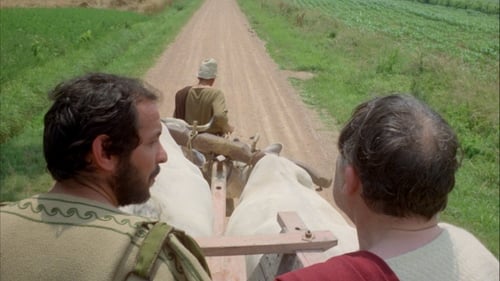
Adaptation
'Dalla nube alla resistenza (From the Cloud to the Resistance ) (1978), based on two works by Cesare Pavese, falls into the category of History Lessons and Too Early, Too Late as well. It, too, has two parts—a twentieth-century text and a text regarding the myths of antiquity, each set in the appropriate landscape. Pavese's The Moon and the Bonfires looks back on the violent deaths of Italian anti-Fascist resistance fighters; Dialogues with Leucò is a series of dialogues between heroes and gods, connecting myth and history and returning to an ambiguous stage in the creation of distinctions, such as that between animal and human, which are fundamental to grammar and language itself. Such a juxtaposition of political engagement with profoundly contemplative issues such as myth, nature, and meaning points to the characters of Empedocles and Antigone in the Hölderlin films.' (From "Landscapes of resistance. The German Films of Danièle Huillet and Jean-Marie Straub" by Barton Byg)

Editor
'Dalla nube alla resistenza (From the Cloud to the Resistance ) (1978), based on two works by Cesare Pavese, falls into the category of History Lessons and Too Early, Too Late as well. It, too, has two parts—a twentieth-century text and a text regarding the myths of antiquity, each set in the appropriate landscape. Pavese's The Moon and the Bonfires looks back on the violent deaths of Italian anti-Fascist resistance fighters; Dialogues with Leucò is a series of dialogues between heroes and gods, connecting myth and history and returning to an ambiguous stage in the creation of distinctions, such as that between animal and human, which are fundamental to grammar and language itself. Such a juxtaposition of political engagement with profoundly contemplative issues such as myth, nature, and meaning points to the characters of Empedocles and Antigone in the Hölderlin films.' (From "Landscapes of resistance. The German Films of Danièle Huillet and Jean-Marie Straub" by Barton Byg)

Director
'Dalla nube alla resistenza (From the Cloud to the Resistance ) (1978), based on two works by Cesare Pavese, falls into the category of History Lessons and Too Early, Too Late as well. It, too, has two parts—a twentieth-century text and a text regarding the myths of antiquity, each set in the appropriate landscape. Pavese's The Moon and the Bonfires looks back on the violent deaths of Italian anti-Fascist resistance fighters; Dialogues with Leucò is a series of dialogues between heroes and gods, connecting myth and history and returning to an ambiguous stage in the creation of distinctions, such as that between animal and human, which are fundamental to grammar and language itself. Such a juxtaposition of political engagement with profoundly contemplative issues such as myth, nature, and meaning points to the characters of Empedocles and Antigone in the Hölderlin films.' (From "Landscapes of resistance. The German Films of Danièle Huillet and Jean-Marie Straub" by Barton Byg)
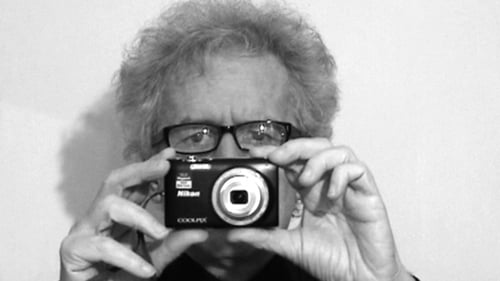
N°343
Cinématon is a 156-hour long experimental film by French director Gérard Courant. It was the longest film ever released until 2011. Composed over 36 years from 1978 until 2006, it consists of a series of over 2,821 silent vignettes (cinématons), each 3 minutes and 25 seconds long, of various celebrities, artists, journalists and friends of the director, each doing whatever they want for the allotted time. Subjects of the film include directors Barbet Schroeder, Nagisa Oshima, Volker Schlöndorff, Ken Loach, Benjamin Cuq, Youssef Chahine, Wim Wenders, Joseph Losey, Jean-Luc Godard, Samuel Fuller and Terry Gilliam, chess grandmaster Joël Lautier, and actors Roberto Benigni, Stéphane Audran, Julie Delpy and Lesley Chatterley. Gilliam is featured eating a 100-franc note, while Fuller smokes a cigar. Courant's favourite subject was a 7-month-old baby. The film was screened in its then-entirety in Avignon in November 2009 and was screened in Redondo Beach, CA on April 9, 2010.

Producer
The film is a sort of presentation of Franco Fortini's book 'I Cani del Sinai'. Fortini, an Italian Jew, reads excerpts from the book about his alienation from Judaism and from the social relations around him, the rise of Fascism in Italy, the anti-Arab attitude of European culture. The images, mostly a series of Italian landscape shots, provide a backdrop that highlights the meaning of the text. - Fabrizio Sabidussi

Editor
The film is a sort of presentation of Franco Fortini's book 'I Cani del Sinai'. Fortini, an Italian Jew, reads excerpts from the book about his alienation from Judaism and from the social relations around him, the rise of Fascism in Italy, the anti-Arab attitude of European culture. The images, mostly a series of Italian landscape shots, provide a backdrop that highlights the meaning of the text. - Fabrizio Sabidussi

Director
The film is a sort of presentation of Franco Fortini's book 'I Cani del Sinai'. Fortini, an Italian Jew, reads excerpts from the book about his alienation from Judaism and from the social relations around him, the rise of Fascism in Italy, the anti-Arab attitude of European culture. The images, mostly a series of Italian landscape shots, provide a backdrop that highlights the meaning of the text. - Fabrizio Sabidussi
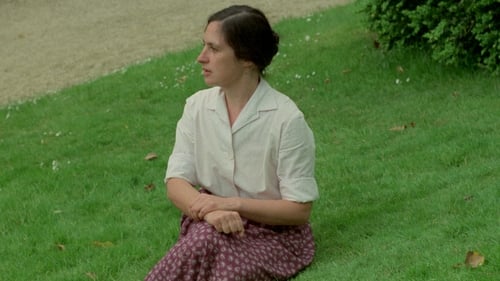
Editor
A tribute to Mallarmé that not only asserts the continuing relevance of his work but also confronts its literary ambiguities with political and cinematic ambiguities of its own. In outline, the film could not be more straightforward: it offers a recitation of one of Mallarmé’s most celebrated and complex poems (it was his last published work in his own lifetime, appearing in 1897, a year before his death) and proposes a cinematic equivalent for the author’s original experiment with typography and layout by assigning the words to nine different speakers, separating each speaker from the other as she or he speaks, and using slight pauses to correspond with white spaces on the original page.

(Re)citer
A tribute to Mallarmé that not only asserts the continuing relevance of his work but also confronts its literary ambiguities with political and cinematic ambiguities of its own. In outline, the film could not be more straightforward: it offers a recitation of one of Mallarmé’s most celebrated and complex poems (it was his last published work in his own lifetime, appearing in 1897, a year before his death) and proposes a cinematic equivalent for the author’s original experiment with typography and layout by assigning the words to nine different speakers, separating each speaker from the other as she or he speaks, and using slight pauses to correspond with white spaces on the original page.

Director
A tribute to Mallarmé that not only asserts the continuing relevance of his work but also confronts its literary ambiguities with political and cinematic ambiguities of its own. In outline, the film could not be more straightforward: it offers a recitation of one of Mallarmé’s most celebrated and complex poems (it was his last published work in his own lifetime, appearing in 1897, a year before his death) and proposes a cinematic equivalent for the author’s original experiment with typography and layout by assigning the words to nine different speakers, separating each speaker from the other as she or he speaks, and using slight pauses to correspond with white spaces on the original page.

Producer
A familiar Biblical tale transformed into a cinematic opera of seemingly endless possibility. In expressive, melodic tones, the fraternal pair debate God’s true message and intent for His creations, a conflict that leads their followers towards chaos and sin. Set almost entirely within a Roman amphitheater whose history lends every precise line-reading and gesture, every startling camera move and cut, a totalizing force.

Editor
A familiar Biblical tale transformed into a cinematic opera of seemingly endless possibility. In expressive, melodic tones, the fraternal pair debate God’s true message and intent for His creations, a conflict that leads their followers towards chaos and sin. Set almost entirely within a Roman amphitheater whose history lends every precise line-reading and gesture, every startling camera move and cut, a totalizing force.

Director
A familiar Biblical tale transformed into a cinematic opera of seemingly endless possibility. In expressive, melodic tones, the fraternal pair debate God’s true message and intent for His creations, a conflict that leads their followers towards chaos and sin. Set almost entirely within a Roman amphitheater whose history lends every precise line-reading and gesture, every startling camera move and cut, a totalizing force.

Editor
This is a small, intense film based on Schoenberg’s opus of the same name with the subtitle “danger, fear, catastrophe”. It deals with emerging fascism and the persecution of Jews, as well as with their historical continuities.

Producer
This is a small, intense film based on Schoenberg’s opus of the same name with the subtitle “danger, fear, catastrophe”. It deals with emerging fascism and the persecution of Jews, as well as with their historical continuities.

This is a small, intense film based on Schoenberg’s opus of the same name with the subtitle “danger, fear, catastrophe”. It deals with emerging fascism and the persecution of Jews, as well as with their historical continuities.
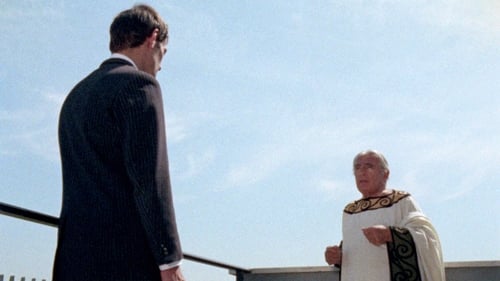
Editor
Set in contemporary Rome, the film shows through a series of encounters with “ancient” Romans, how the economic and political manipulation by ancient Roman society led to Caesar’s dictatorship. - British Film Institute

Director
Set in contemporary Rome, the film shows through a series of encounters with “ancient” Romans, how the economic and political manipulation by ancient Roman society led to Caesar’s dictatorship. - British Film Institute

A group of men, women and Kristl with his camera debate how to resist authority in all its forms. All cinematic professionalism is avoided as Kristl explores how to live and make films politically.

Editor
Straub-Huillet’s first color film, adapts a lesser-known Corneille tragedy from 1664, which in turn was based on an episode of imperial court intrigue chronicled in Tacitus’s Histories. The costuming is classical, and the toga-clad, nonprofessional cast performs the drama’s original French text amid the ruins of Rome’s Palatine Hill while the noise of contemporary urban life hums in the background. Their lines are executed with a terrific flatness and frequently through heavy accents; the language in Othon becomes not merely an expression but a thing itself, an element whose plainness here alerts us to qualities of the work that might otherwise be subordinated.

Director
Straub-Huillet’s first color film, adapts a lesser-known Corneille tragedy from 1664, which in turn was based on an episode of imperial court intrigue chronicled in Tacitus’s Histories. The costuming is classical, and the toga-clad, nonprofessional cast performs the drama’s original French text amid the ruins of Rome’s Palatine Hill while the noise of contemporary urban life hums in the background. Their lines are executed with a terrific flatness and frequently through heavy accents; the language in Othon becomes not merely an expression but a thing itself, an element whose plainness here alerts us to qualities of the work that might otherwise be subordinated.

Producer
Three sequences are linked together in this short film by Straub; the first sequence is a long tracking shot from a car of prostitutes plying their trade on the night-time streets of Germany; the second is a staged play, cut down to 10 minutes by Straub and photographed in a single take; the final sequence covers the marriage of James and Lilith, and Lilith’s subsequent execution of her pimp, played by Rainer Werner Fassbinder. "The film is a look entirely at Western decadence" - Jean-Marie Straub.

Adaptation
Three sequences are linked together in this short film by Straub; the first sequence is a long tracking shot from a car of prostitutes plying their trade on the night-time streets of Germany; the second is a staged play, cut down to 10 minutes by Straub and photographed in a single take; the final sequence covers the marriage of James and Lilith, and Lilith’s subsequent execution of her pimp, played by Rainer Werner Fassbinder. "The film is a look entirely at Western decadence" - Jean-Marie Straub.

Editor
John cheats on Jane with Ann. He claims Jane doesn't care about love, and is wrong: in the end Jane shoots John.
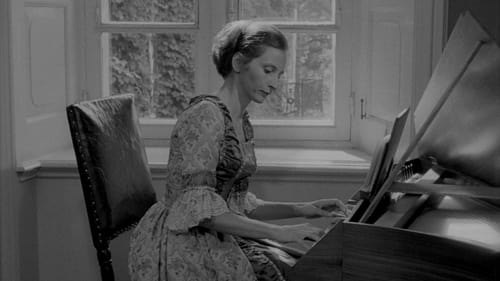
Producer
스트라우브와 위예의 첫 번째 장편영화로 그들의 이름이 세계적으로 알려지는 계기를 마련했던 작품. 네덜란드 출신의 건반악기 연주자이자 지휘자로 유명한 구스타브 레온하르트가 바흐 역을 맡았다. 전체적으로 바흐의 아내 안나의 보이스-오버 내레이션, 음악을 지휘하거나 연주하는 바흐의 모습을 담은 정적인 장면들로 구성된 영화다. 여기서 음악은 일개 부수 물이 아니라 영화의 가장 중요한 소재(raw material)로서 다루어지고 있다.

Editor
스트라우브와 위예의 첫 번째 장편영화로 그들의 이름이 세계적으로 알려지는 계기를 마련했던 작품. 네덜란드 출신의 건반악기 연주자이자 지휘자로 유명한 구스타브 레온하르트가 바흐 역을 맡았다. 전체적으로 바흐의 아내 안나의 보이스-오버 내레이션, 음악을 지휘하거나 연주하는 바흐의 모습을 담은 정적인 장면들로 구성된 영화다. 여기서 음악은 일개 부수 물이 아니라 영화의 가장 중요한 소재(raw material)로서 다루어지고 있다.

Writer
스트라우브와 위예의 첫 번째 장편영화로 그들의 이름이 세계적으로 알려지는 계기를 마련했던 작품. 네덜란드 출신의 건반악기 연주자이자 지휘자로 유명한 구스타브 레온하르트가 바흐 역을 맡았다. 전체적으로 바흐의 아내 안나의 보이스-오버 내레이션, 음악을 지휘하거나 연주하는 바흐의 모습을 담은 정적인 장면들로 구성된 영화다. 여기서 음악은 일개 부수 물이 아니라 영화의 가장 중요한 소재(raw material)로서 다루어지고 있다.

Director
스트라우브와 위예의 첫 번째 장편영화로 그들의 이름이 세계적으로 알려지는 계기를 마련했던 작품. 네덜란드 출신의 건반악기 연주자이자 지휘자로 유명한 구스타브 레온하르트가 바흐 역을 맡았다. 전체적으로 바흐의 아내 안나의 보이스-오버 내레이션, 음악을 지휘하거나 연주하는 바흐의 모습을 담은 정적인 장면들로 구성된 영화다. 여기서 음악은 일개 부수 물이 아니라 영화의 가장 중요한 소재(raw material)로서 다루어지고 있다.

A short TV documentary about the making of Straub-Huillet's 'Chronicle of Anna Magdalena Bach'

Young Johanna Fähmel
A story about the continuity and collapse of history, the power of suppression, and the terror of reconciliation; loyalty, treason and revenge. In a brave cinematic game, Heinrich Böll’s story Billiards at Half-Past Nine is split up into cracks, blocks, breaks and sudden turns, as the life story of a German family, covering numerous generations, is propelled forward.

Director
A story about the continuity and collapse of history, the power of suppression, and the terror of reconciliation; loyalty, treason and revenge. In a brave cinematic game, Heinrich Böll’s story Billiards at Half-Past Nine is split up into cracks, blocks, breaks and sudden turns, as the life story of a German family, covering numerous generations, is propelled forward.

Editor
A story about the continuity and collapse of history, the power of suppression, and the terror of reconciliation; loyalty, treason and revenge. In a brave cinematic game, Heinrich Böll’s story Billiards at Half-Past Nine is split up into cracks, blocks, breaks and sudden turns, as the life story of a German family, covering numerous generations, is propelled forward.

Screenplay
A story about the continuity and collapse of history, the power of suppression, and the terror of reconciliation; loyalty, treason and revenge. In a brave cinematic game, Heinrich Böll’s story Billiards at Half-Past Nine is split up into cracks, blocks, breaks and sudden turns, as the life story of a German family, covering numerous generations, is propelled forward.

Director
복권되어 장군으로 진급이 예정된 전 나치 베어마흐트(독일 국방군) 장교 에리히 폰 마쇼르카-머프가 수도에 도착한 월요일 밤부터 나흘간에 걸쳐 일어나는 이야기.
